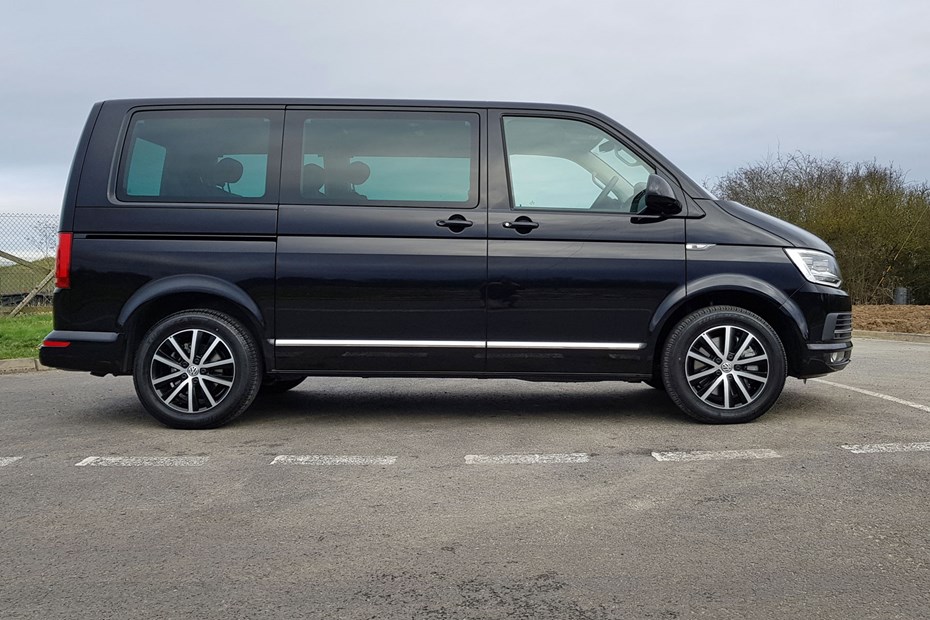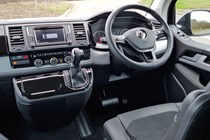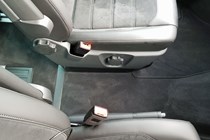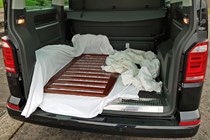In the January 2020 issue of CAR magazine, Gavin Green suggested a family of four needs no bigger car than a basic supermini – he’s talking about the latest Peugeot 208 and Renault Clio, though the most familiar example of this breed is the Ford Fiesta.
I understand where he’s coming from in terms lightweight engineering and use of precious resources, but attempt to cram a holiday’s worth of luggage into one of those alongside the passengers, and you’ll soon discover that as a single-vehicle solution, a small car is going to be tough for many families to live with.
And that’s assuming two of the family members are small children. Try getting two adults and two large teens in a Fiesta for a long journey – or even one small child and baby. As a father to a very lively 18-month-old, my experiences so far suggest that travelling light with a baby is not easy at all. The only way you’ll get a travel cot and a buggy into the boot of a Fiesta is with an axe – and even then you won’t have much room left other gubbins.
What’s more, while I strongly suspect my wife and I are not good at packing light, I’ve found it a struggle to fit everything we feel we need into the boot of a Mazda 6 Tourer estate (my previous long-term test car, which I ran for nearly 12 months) or a SEAT Tarraco SUV (my current long-term test car).
Which explains why I’ve spent the two weeks over the Christmas holidays running around in a Volkswagen Caravelle instead – because all that essential stuff and Christmas presents just wasn’t going to fit in the SEAT.
The result of this is a strong conviction that something I’ve always suspected is definitely true: the best family car is actually a van.
Is the Volkswagen Caravelle really a van?
Well, it’s technically a people carrier or MPV, but it’s based on the Volkswagen Transporter medium van and sold via the VW Commercial Vehicle dealer network. Basically, it’s a van with extra seats and windows, more carpet and a fancier dashboard.
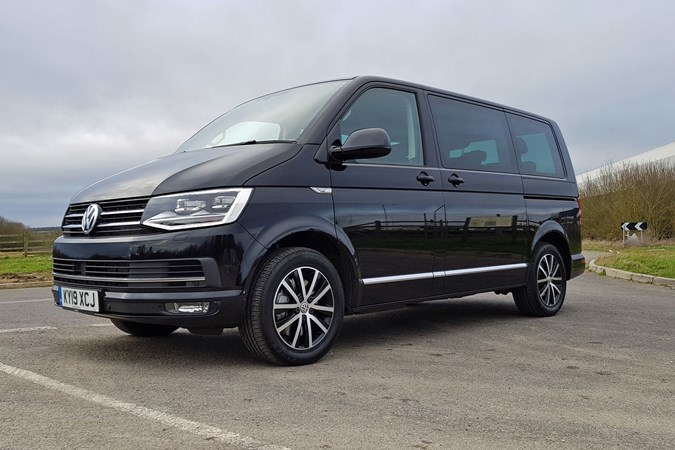
VW is far from alone in offering such a product. The Tourneo Custom is the people carrying version of the Ford Transit Custom, for example, and there are passenger variants of all the PSA Group vans – including the latest Vauxhall Vivaro – the Renault Trafic family and the Mercedes-Benz Vito.
These can all be rather expensive (as we’ll see below), but many of the advantages can also be found in plainer crew vans if you don’t need seating for more than five or six.
So what are the advantages?
The main one is the most obvious: space.
Whether you need to carry an unusually large number of people or just a regular number with a lot of stuff, these vans are just so much more practical than even the biggest estate cars.
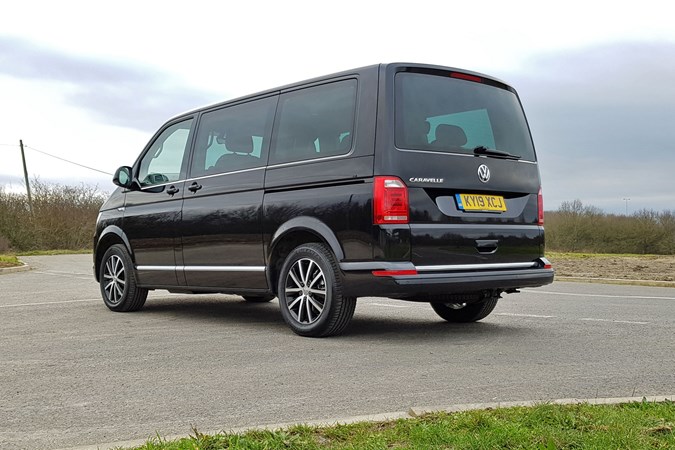
The boot opening is wider, the floor is lower so you don’t have to lift heavy items as high, and if you aren’t embarking on a week-long family break with gifts, you’ll probably find you can sling the baby buggy in the back without collapsing it down.
So if you’ve got a hobby that requires plenty of space for kit – such as mountain biking – a van is also ideal.
You still need to load carefully for the sake of safety, of course, but for real concerns in this area you’ll find that most of these vans still have load-lashing rings to help secure items so they can’t slide around.
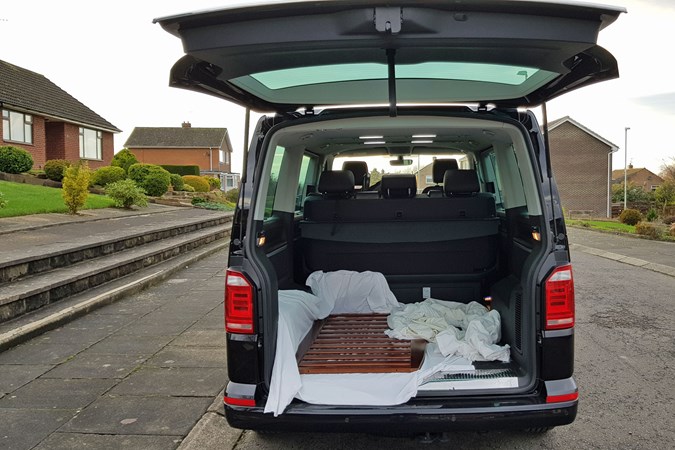
There are practical advantages inside the cabin, too. The seating positions are high, and there are big windows and lots of headroom, so everyone on board has a good view out and is unlikely to feel claustrophobic. Most models have sliding seats, and some have seats you can spin round to create a lounge – but whatever the setup there will be plenty of legroom.
Moveable and removable seats mean you can tailor load space and people space to your exact requirements for every journey, too. A reasonably large permanent cot easily slotted into the back of the Caravelle alongside five adult passengers (though I did have to remove the individual middle-row seats).
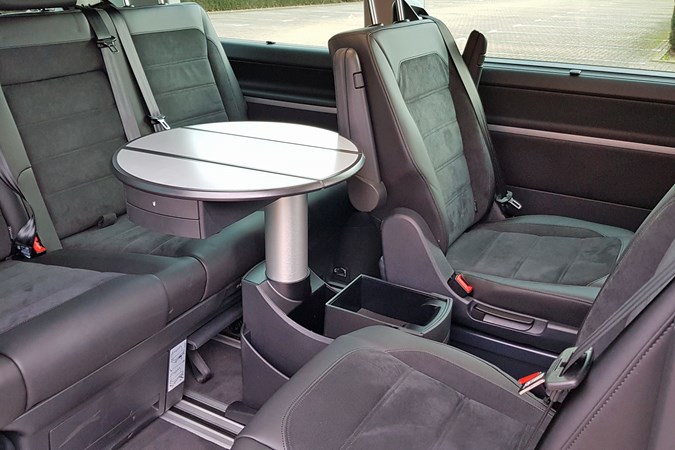
Another bonus is the flat floor and high roof mean you can move between the front and rear passenger areas without exiting the vehicle (unless you’ve got three seats in the front of course). Great for a rainy picnic, as well as making it easy to exit or enter the van from any door, which can be handy for all sorts of reasons – including tight car parks, busy roads, and puddles.
The rear sliding side doors also make car parks a breeze with children, while the large tailgate most passenger versions are fitted with can double as a rain awning when changing muddy boots. The Executive specification Caravelle I’ve been driving even comes with an adjustable table in the back.
Surely these van-based people carriers are terrible to drive?
Once upon a time that may have been true, but these days most of them are perfectly fine to drive – and with some surprisingly powerful engines available, you might even call them fun. This Caravelle has 199hp, and goes like the clappers if you let it.
Being so tall, they aren’t quite as sharp to steer as a regular car, and can roll around a bit if you’re too hasty in the corners. Grip is rarely and issue, though, and most come with plenty of modern driver aids including autonomous emergency braking.
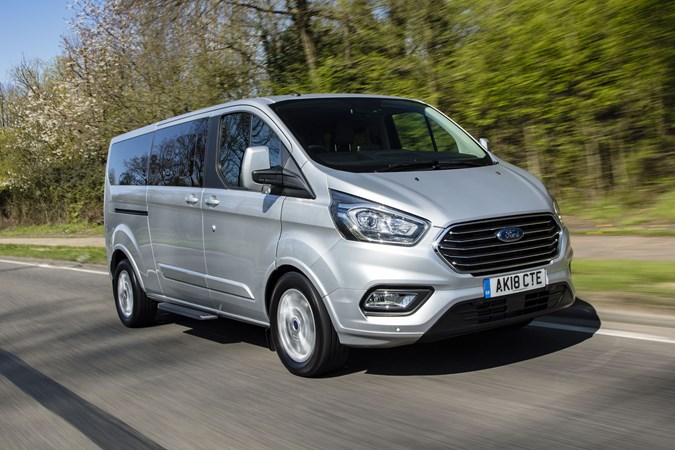
Creature comforts such as air-conditioning and automatic gearboxes are commonplace, too.
Ride quality and refinement can be somewhat variable, however, with passengers in the back likely to find things bumpier than those in the front. There is typically more road and wind noise in a vehicle like this, too – though you may find this helps put the baby to sleep…
Certainly, most vans are more pleasant to spend time in than most pickups, which is an alternative practical family choice some might also consider.
It can’t all be good news, or everyone would have one…
This is, of course, true. Some people just won’t accept the idea of driving a van at all, for starters, but there are more practical problems, too.
The size unsurprisingly means more roads will feel like a squeeze in one of these, and you might occasionally arrive at a car park to find the van is too tall to fit inside.
In reality, most medium vans will fit in most car parks, but if this makes you particularly nervous, go for one of the PSA Group models (including the Vauxhall Vivaro Life pictured below), which are lower than most.
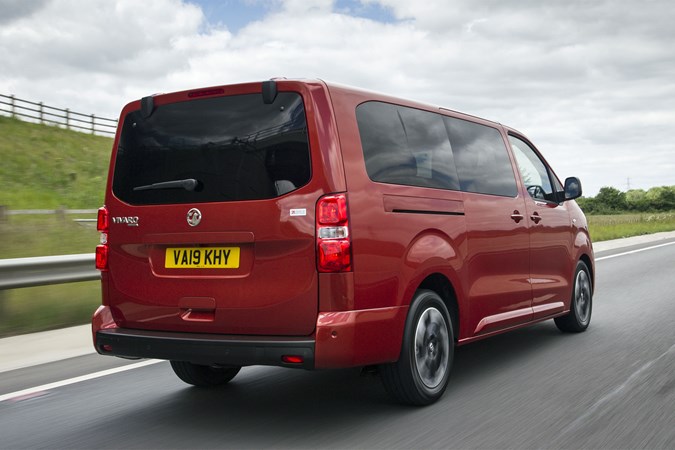
As long as you can fit in a parking space you will probably be able to get out, however, thanks to the sliding side doors. Parking sensors and reversing cameras are available to help with the parking itself, and automatic parking is offered on some models, just as it is on some cars.
Active safety equipment tends to lag slightly behind in the van world, but the gap has been closing rapidly in recent years and many modern vans are available just as well equipped as regular cars – see the latest Tourneo Custom and forthcoming Caravelle T6.1, for instance.
It’s a similar story with refinement – though this is one area where the Caravelle T6 pictured here is particularly poor, which perhaps isn’t something you’d expect of a Volkswagen.

Other issues to consider include the weight of the seats – which makes removing them no easy task; you then have to find somewhere to store them when they’re out, too – and that the size of the rear tailgate can sometime make it impossible to open in a car park. Which is a pain.
Still, optional power operation of this (and the sliding doors) means you won’t have to worry about closing it manually.
What about the cost?
The cost is probably the greatest stumbling block to ownership of all. This front-wheel drive Caravelle Executive with its 199hp 2.0-litre TDI diesel engine and seven-speed DSG automatic transmission is priced at over £52,000 when you include the VAT – and there’s a 4Motion four-wheel drive version that’s even pricier.
More budget-conscious buyers who need the space more than the bells and whistles are probably therefore better off looking at passenger versions of the vans proper, such as the Transporter Shuttle and Vito Tourer, if lots of seats are required, or crew vans like the Transit Custom DCiV (Double Cab-in-Van) if the big boot and five seats is a greater priority.
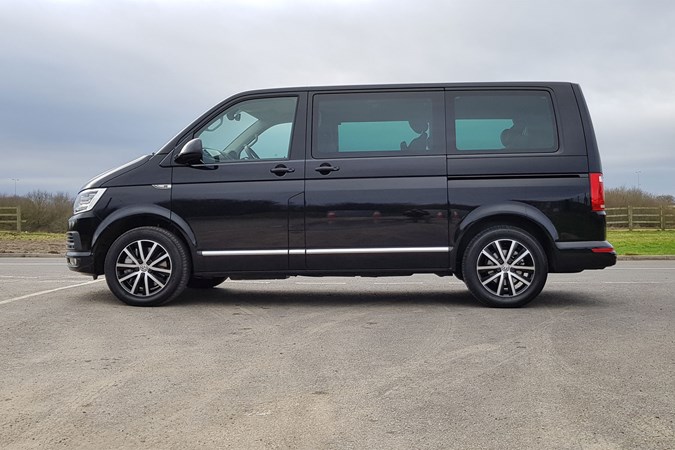
Monthly finance costs on premium versions can prove surprising affordable, however, thanks to strong used values – so make sure you compare the lease and finance rates of different models before making a final decision.
Buying used is another cost-cutting option, though you’ll find that good examples of desirable models still don’t go particularly cheap.
And no matter what model you choose, the fuel economy won’t be able to compete with a conventional passenger car – fully loaded it’s unlikely any medium van-based people mover will get much more than 30mpg.
So is a van really a better family vehicle than a car?
As with everything in life, it’s different strokes for different folks. But if practicality is king, and you can only justify one vehicle to cover all of your needs, a van like this can make a lot of sense. Whether you need to carry seven adults in comfort or five with a load of mountain bikes in the back, you’ll find that a modern van will do the job of a modern car and then some.
The cost – coming in at around 1.5 Fiestas at the very least – and the fuel economy are clearly issues that not everyone would be able to get around, yet the size is less of a problem than you probably think, and the driving experience almost certainly better than you imagine.
Also read
>> VW Transporter T6.1 full details
Just so you know, we may receive a commission or other compensation from the links on this website - read why you should trust us.


